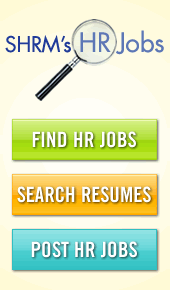Supreme Court could transform labor and employment law.
2024 SCOTUS
The Supreme Court issued four decisions narrowing agencies' power to make policy through formal rulemaking and adjudication.
- The Supreme Court issued four decisions narrowing agencies' power to make policy through formal rulemaking and adjudication.
- In the short term, these decisions could make it harder for agencies to defend major rules on overtime, joint employment, prevailing wages, pregnancy accommodation and noncompete agreements.
- In the long run, the decisions could push agencies to make policy in other ways, such as strategic lawsuits and informal guidance.
How did the Supreme Court narrow agency power?
The biggest decision came in Loper Bright Enterprises v. Raimondo, where the Supreme Court held that judges cannot defer to an agency's interpretation of the law. Instead, judges must exercise their "independent judgment" and give statutes their "best meaning." Judges can still consider agency guidance when that guidance is persuasive, longstanding, and consistent. But they cannot treat that guidance as "binding"; they must interpret statutes for themselves.
Next, in Securities and Exchange Commission v. Jarkesy, the Supreme Court narrowed the range of penalties that agencies can impose through their own adjudicative processes. Many agencies, including the SEC, enforce statutes through in-house quasi-courts staffed by administrative law judges. These "ALJs" are not "real" judges under the U.S. Constitution, with lifetime appointments; instead, they are agency employees with some statutory removal protection. They decide cases using administrative procedures and without a jury.
Third, the Court signaled that judges should demand better explanations from agencies during the rulemaking process. In Ohio v. Environmental Protection Agency, it struck down the EPA's "good neighbor" plan under the Clean Air Act because the agency "ignored" important problems raised during the public-comment period.
Finally, in Corner Post, Inc. v. Board of Governors of the Federal Reserve System, the Court expanded the window for rulemaking challenges. The question in Corner Post was when a plaintiff can sue to challenge a rule under the Administrative Procedure Act (APA)..
How do these decisions affect labor and employment law?
Though none of these decisions involved labor and employment law, all of them will affect labor and employment agencies. Agencies like the Department of Labor (DOL), the National Labor Relations Board (NLRB), the Equal Employment Opportunity Commission (EEOC), and the Occupational Health and Safety Administration (OSHA) will face new constraints on their discretion. They will have to find new ways to develop policy. They may even face new attacks on their basic structures.
That shift could affect some rules immediately. Under the Biden administration, labor and employment agencies have been active rule makers. In the last 12 months, they have published major rules on overtime, worker classification, joint employment, pregnancy accommodations, prevailing wages, and noncompete agreements. Those rules have all been challenged in court, and the lawsuits are still pending. In each, the challengers claim that the agency misread the underlying statute. Each case will offer an early test of how the balance has shifted. The results could lead agencies to make fewer major rules.
How will labor and employment agencies react?
Whether these challenges succeed or not, agencies will likely have a harder time making policy through rulemaking and adjudication. That doesn't mean they'll be complacent. Facing the same economic, social, and political pressures to change policy, agencies will still have incentives to update and change their rules. They will just have to find other ways to do it such as running them through the states. Those bodies have their own structural principles about who can make binding rules. And in recent years, state and city agencies have become increasingly active rule makers.
What should employers watch for?
The next few months will say a lot about where labor and employment policy goes. The NLRB, EEOC, DOL, and OSHA already face challenges to major rules. Those rules could prove harder to defend under the Court's recent decisions. And in the long term, these agencies will have to rethink their policymaking strategy. Littler's WPI is following these developments closely and will report major updates. In the meantime, employers should work closely with their counsel to determine how these developments affect their businesses.
Commentary by: Raylea Stelmach
Edited by:
EPSHRM provides content as a service to its readers and members. It does not offer legal advice, and cannot guarantee the accuracy or suitability of its content for a particular purpose




